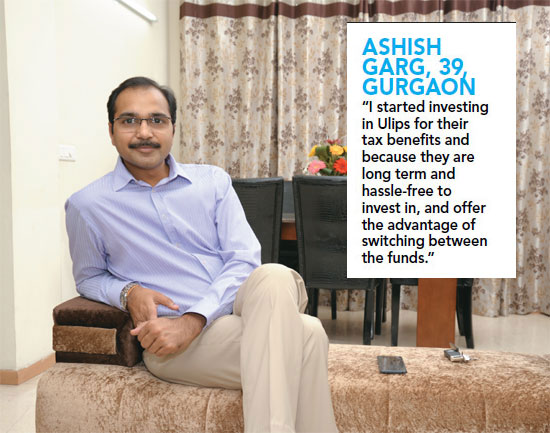Mix 'n' match for your right match
Clearly list out what you need and then look for the best fit Insurance for you

 The paradox of choice can be best witnessed when it comes to insurance. Over a decade ago, just as the insurance industry in India was settling in with a clutch of new private insurers introducing new forms of insurance, the mood among consumers was that of euphoria. Finally, there was choice and plenty of options to pick from. Around the same time, Sheena Iyengar, an expert on the subject of choice, was publishing a series of studies showing the opposite to be true. The psychology of choice is much in talk today and proponents of ‘less is more’ repeatedly demonstrate that when it comes to making a choice, fewer options work.
The paradox of choice can be best witnessed when it comes to insurance. Over a decade ago, just as the insurance industry in India was settling in with a clutch of new private insurers introducing new forms of insurance, the mood among consumers was that of euphoria. Finally, there was choice and plenty of options to pick from. Around the same time, Sheena Iyengar, an expert on the subject of choice, was publishing a series of studies showing the opposite to be true. The psychology of choice is much in talk today and proponents of ‘less is more’ repeatedly demonstrate that when it comes to making a choice, fewer options work.
The popularity of life insurance can now be gauged by the introduction of a new kind of policy—the unit-linked insurance plan or Ulip. Ulips are financial products designed to meet the insurance and investment needs of an individual. Says, Sandeep Bakhshi, MD and CEO, ICICI Prudential Life Insurance: “Ulips are transparent, customer friendly products that allow an individual to choose the asset allocation between debt and equity.” In contrast, the older insurance plans, popularly known as endowment and money back, largely invest the money into debt instruments. These policies worked well in an environment of high interest rates.
ULIP MANIA
When you buy a Ulip, a part of the premium that you pay goes towards covering the risk called ‘mortality charges’. Another part of the premium pays for management of the fund, which includes administrative charges, fund management charges, processing fee and fund allocation charges. The net premium after deduction of all charges is invested in the fund chosen by you. “I got a good insurance cover on my life. The policy allows me to select the sum assured and there is flexibility to switch across different funds, allowing me to create my own investment strategy,” says 39-year-old, Gurgaon based Ashish Garg.

 Garg is among the new breed of insurance seekers who wish to protect their lives as well as benefit from high investment returns without worrying too much over where to put their money. “I also claim for tax deductions on the premiums I pay, I could not have asked for anything better,” he says. Despite the convenience, Ulips have always come under the lens when it comes to costs and benefits. A lot of that has changed over the past five years, which make Ulips perhaps the first financial instrument that one picks to see the way stock markets function.
Garg is among the new breed of insurance seekers who wish to protect their lives as well as benefit from high investment returns without worrying too much over where to put their money. “I also claim for tax deductions on the premiums I pay, I could not have asked for anything better,” he says. Despite the convenience, Ulips have always come under the lens when it comes to costs and benefits. A lot of that has changed over the past five years, which make Ulips perhaps the first financial instrument that one picks to see the way stock markets function.
Today, Ulips come with a five-year lock-in and ensure that the policyholder gets a minimum sum assured of 10 times the premium for entry age below 45 years and seven times for entry age above 45 years. “Ulips help policyholders tap the wealth creation opportunity in Indian capital markets over the long term, with fund options to suit their risk appetite,” explains Kshitij Jain, CEO, and Exide Life Insurance. But, Ulips are just one of the facets of life insurance, there are several other insurance plans that exist to cater to the different needs that one has.
THE RIGHT MIX
From your perspective, you should view insurance in a holistic manner than viewing it in isolation as life, health, motor and other forms. Evaluate your financial position— future financial goals, liabilities, the essential things in life that you cannot do without and the financial risk associated with these goals. For instance, when you start your career and are single, you don’t need a life insurance policy at all. Instead, you need a health insurance policy.
“Life insurance companies today offer need analysis on the basis of which customers can select the  product best suited to achieve their financial goals,” explains Bakhshi. He is quick to add that, “The first life insurance product one should buy is the term plan. This helps to ensure that the family has a financial safety net to fall back on, in case of an unforeseen tragedy.” Term insurance is a no-frills plan, designed to ensure that in the event of the policyholder’s death, the family gets the sum assured. As these do not have any savings or investment component, the premiums cost less compared to the quantum of insurance cover.
product best suited to achieve their financial goals,” explains Bakhshi. He is quick to add that, “The first life insurance product one should buy is the term plan. This helps to ensure that the family has a financial safety net to fall back on, in case of an unforeseen tragedy.” Term insurance is a no-frills plan, designed to ensure that in the event of the policyholder’s death, the family gets the sum assured. As these do not have any savings or investment component, the premiums cost less compared to the quantum of insurance cover.
In case of life insurance, at any time, the policy should be commensurate to the income and liabilities one has. But life insurance is much more than pure term insurance. “One can start providing for other financial requirements as soon as you start earning and have a stable flow of income. The insurance plan should be comprehensive to cover all financial needs such as education of children, saving a corpus for home purchase, and retirement,” says Arijit Basu, MD and CEO, SBI Life Insurance.
Says Kolkata-based, 32-year-old Aritra Roy: “I have four moneyback policies, which help me generate lump sum amounts at future dates, which is very useful for me.” He has concerns over job security and feels such policies will help him tide over phases when he may not have a steady income stream. “There is security, there is tax benefit and there is liquidity all rolled into a single product, which serves my purpose,” he explains. The fact that insurance plans are also available to save for one’s retirement makes them a suitable choice for long-term savings and investments.
INSURANCE BASKET
One should have a health insurance cover at every stage in life. The rising cost of healthcare aside, unlike life insurance, which primarily works in case of an eventuality with you, health insurance is something that you will need in your own lifetime. The choice within the available health insurance basket is plenty. But, that does not mean that you need them all. Make sure you have a basic health insurance plan that covers you for health-related hospitalisation and treatment, including surgery. However, most of these can be claimed only if you are hospitalised. Largely, such policies do not cover for out-patient treatment and come with the limitation that hospitalisation is a must.

There is one insurance policy, which is mandatory—the motor insurance policy, which has to be taken by
every vehicle owner who wishes to ply his car or bike on Indian roads. This policy comes with a liability cover, popularly known as third party cover and own damage cover. The third party liability cover is mandatory to take care of your legal liability for the damage you cause to a third party—bodily injury, death and damage—while driving your vehicle. So, technically Salman Khan was covered by it, when he mowed down those asleep on the pavement in 2002, for up to Rs.7.5 lakh in damages.
Likewise, if you are travelling abroad, several countries insist on a travel insurance as part of visa requirements and rightfully so. “Earlier this year, I had gone to the US to attend a friend’s wedding where I developed severe stomach infection leading to hospitalisation. Thankfully, the travel insurance policy had medical cover and that saved me,” recounts 38-year-old, Noida-based Alok Kumar.

There are also benefits of being part of groups and associations, as one can look for a collective insurance plan to address the insurance needs of the group. “Group insurance is basically bundled with another core product, which are primarily loans availed in our case,” explains Manoj Jain, MD and CEO, Shriram Life Insurance. Their group insurance offers valuable life cover to the borrowers to the extent of their borrowings and helps the family retain assets for which the loan has been taken. “The asset can be a two-wheeler, a commercial vehicle, a house or even pledged gold ornaments,” adds Jain.
 Although such insurance covers are not expansive, they are just about adequate for several people who otherwise have no form of insurance. The advantage of being part of a group insurance is manifold, you are not asked for a lot many documents, which you may otherwise be asked for when taking an individual plan. Moreover, it may not be a bad idea to start with a group and then branch out to have independent policies of your own.
Although such insurance covers are not expansive, they are just about adequate for several people who otherwise have no form of insurance. The advantage of being part of a group insurance is manifold, you are not asked for a lot many documents, which you may otherwise be asked for when taking an individual plan. Moreover, it may not be a bad idea to start with a group and then branch out to have independent policies of your own.
More importantly, buying a policy is not a one-time exercise. Circumstances in life change and so do financial needs. “One should periodically, say, once every five years, review the existing insurance coverage and keep on increasing the life cover as per the requirement,” suggests Basu. There are broad thumb rules, which are good to have in an indicative cover. “A person in the age group of 25-40 should have a life cover which is 30 times the annual income while individuals in the 40-50 age brackets should have a life cover of about 20 times their annual income,” advises Bakhshi. Whatever your life stage, if you have Ulips, do make it a point to review the performance of the fund you have invested in to exercise the choice of shifting among them. Also, make it a point to understand the advantages of insurance policy and how they fit your needs before buying a cover.









